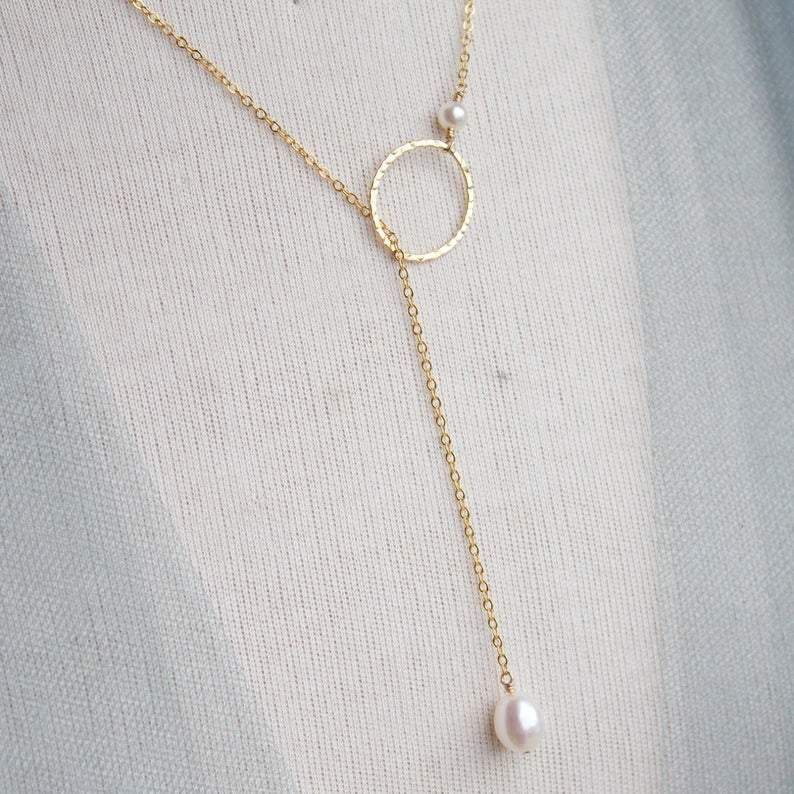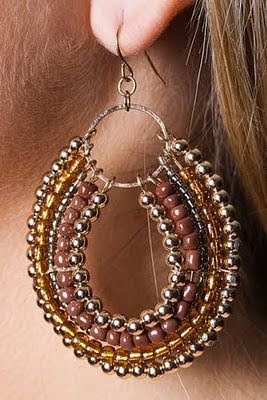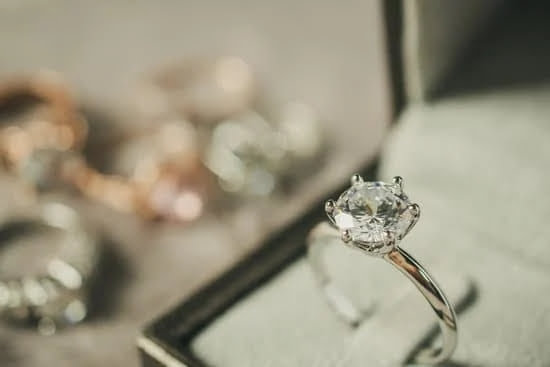Beaded jewelry has captured the attention of fashion enthusiasts and trendsetters, making it one of the most popular and trendy accessories right now. This article will guide you through the process of designing your own beaded jewelry, allowing you to express your creativity and showcase your unique style.
From understanding the rise in popularity of beaded jewelry to exploring different materials and design techniques, this article will provide all the essential information to help you embark on a rewarding journey of creating stunning pieces.
In recent years, beaded jewelry has experienced a significant surge in popularity. One of the key reasons for its increased demand is its versatility and customization options. Designing your own beaded jewelry allows you to bring your creative vision to life, ensuring that each piece perfectly reflects your personal style. Whether you prefer delicate and dainty designs or bold and statement-making pieces, beaded jewelry offers endless possibilities for self-expression.
Another factor contributing to the popularity of beaded jewelry is its appeal across various age groups. Regardless of whether you are a teenager or an older adult, there are countless design options available that cater to different preferences and aesthetics. Beaded jewelry has become a fashion statement that transcends generational boundaries, allowing individuals from different age groups to embrace this trend and showcase their unique sense of style.
In the following sections of this article, we will delve deeper into the materials needed for designing beaded jewelry, tips for choosing the perfect beads for your designs, various design techniques, creating different styles, personalizing your creations, designing on a budget, as well as maintenance and care for your beloved pieces. By the end of this comprehensive guide, you’ll have all the knowledge and inspiration needed to start designing your own stunning beaded jewelry collection.
Materials You’ll Need for Designing Beaded Jewelry
One of the first steps in designing beaded jewelry is gathering all the necessary materials and tools. Having the right supplies on hand will not only make the process smoother but also allow for more creativity and experimentation in your designs. Here is a breakdown of the essential materials you’ll need for designing beaded jewelry:
Beads
Beads are, of course, at the heart of any beaded jewelry design. There are various types of beads to choose from, each with its own unique characteristics and beauty. Some common types include glass beads, gemstone beads, wooden beads, and metal beads. Consider the style and theme you want to achieve when selecting your beads.
Jewelry Findings
Jewelry findings are essential components that hold your beaded jewelry together. This includes clasps (lobster, toggle, magnetic), crimp beads or tubes (used to secure the ends of bead strands), jump rings (used to attach findings or charms), ear wires (for earrings), and wire (for stringing or creating wirework designs). It’s important to have a variety of findings on hand so you can choose ones that complement your design.
Tools
Having the right tools will make your beaded jewelry-making process much easier. Here are some tools you’ll need:
- Jewelry wire cutters: Used for cutting wires.
- Round nose pliers: Handy for bending wires into loops or making wrapped loops.
- Flat nose pliers: Used for gripping and bending wires.
- Crimping pliers: Designed specifically for securing crimp beads/tubes.
- Beading needles: Thin needles used for bead weaving or embroidery techniques.
- Beading mat: Helps prevent beads from rolling away while working.
- Jewelry glue/adhesive: Useful for attaching certain findings or elements if needed.
This list provides a basic foundation of materials and tools needed for designing beaded jewelry. As you progress in your jewelry-making skills, you may discover additional tools or supplies that suit your personal style and techniques. Remember to always have a variety of beads, findings, and tools on hand to allow for flexibility and creativity in your designs.
Choosing the Perfect Beads for Your Design
A comprehensive guide to selecting beads based on color, shape, size, and material
Choosing the perfect beads for your design is an essential step in creating stunning and unique beaded jewelry pieces. One of the first considerations when selecting beads is color. Colors can evoke different moods and feelings, so think about what you want your jewelry to convey. Are you going for a vibrant and bold look or something more subtle and calming? Consider how the colors will complement each other and the overall aesthetic you want to achieve.
Shape is another important factor to consider. Beads come in a wide range of shapes such as round, oval, cube, or even abstract forms. The choice of shape can greatly impact the design and style of your jewelry. Round beads are versatile and can be used in various designs, while geometric shapes like cubes or rectangles can add structure and interest.
Size is also crucial when choosing beads. Different sizes create different effects in the finished piece. Larger beads make a statement and are often used as focal points in a design, while smaller beads can be used for intricate patterns or details. Consider the scale of your project and how you want it to look on the body.
Another factor to consider when selecting beads is their material. Beads come in a variety of materials such as glass, gemstone, wooden, ceramic, plastic, or metal. Each material has its own unique characteristics that can add texture and visual interest to your jewelry design. Gemstone beads may add a touch of luxury, while wooden beads create a natural and earthy feel.
Tips for mixing and matching different types of beads to create visually appealing patterns
Mixing and matching different types of beads is an exciting way to express your creativity in beaded jewelry design. When combining different types of beads in a single piece, it’s important to consider their characteristics to create visually appealing patterns.
One approach is to create contrast by using beads of different sizes, shapes, and colors. For example, pairing small round beads with larger geometric beads can create an interesting texture and focal point. Playing with contrasting colors can also make your design stand out. Experiment with complementary or contrasting color combinations to achieve a visually striking effect.
Another technique is to create harmony by using beads within a similar color palette or theme. This can be achieved by selecting beads that share a common color or material. By doing so, you can create a cohesive and balanced design that showcases the beauty of each individual bead.
Additionally, consider incorporating different finishes and textures into your design. Mix glossy glass beads with matte gemstone beads or add metallic accents to create dimension and visual interest. Don’t be afraid to experiment and try unconventional combinations – sometimes unexpected pairings yield the most unique and captivating results.
Exploring the significance of specific beads in different cultures and their impact on design
Beads have played significant roles in various cultures throughout history. They have been used as symbols of status, spirituality, protection, and storytelling. Exploring the significance of specific beads from different cultures can provide inspiration for your own designs.
For example, in African culture, trade beads were historically used as currency and had deep cultural meanings. Incorporating these vibrant and patterned trade beads in your jewelry can pay homage to this rich heritage.
Native American tribes often use turquoise stones in their traditional jewelry as they are believed to bring good fortune and protect against evil spirits. Including turquoise beads in your design not only adds a pop of vibrant blue but also carries symbolic meaning.
By learning about the cultural significance behind certain types of beads, you can incorporate them thoughtfully into your designs while respecting their origins and history. This knowledge adds depth and meaning to your creations while showcasing the diversity of beadwork across different cultures around the world.
Design Techniques for Beaded Jewelry
When it comes to designing beaded jewelry, there are a variety of techniques that can be employed to create unique and beautiful pieces. Whether you are a beginner or an experienced jewelry maker, learning and mastering these techniques will enhance your ability to bring your creative visions to life.
One of the most basic techniques in beaded jewelry design is stringing. This involves threading beads onto a wire or string to create a necklace, bracelet, or anklet. Stringing allows for endless possibilities in terms of bead combinations and patterns. Knotting is another simple yet effective technique that adds durability and style to the design. It involves tying knots between each bead in order to prevent them from rubbing against each other.
Wirework is a more advanced technique that involves shaping and manipulating wire to form various components for jewelry making. This technique allows for intricate designs and can be used to create earrings, pendants, or even elaborate statement necklaces. It requires practice and mastery of basic wire-wrapping techniques such as creating loops, coils, and spirals.
Bead weaving is another popular technique that involves using needle and thread to create intricate patterns with beads. This technique allows for more complex designs like bracelets or cuffs with geometric patterns or floral motifs. Embroidery techniques can also be utilized in beaded jewelry design by incorporating beads into fabric through stitching, enhancing the overall texture and visual appeal of the piece.
| Technique | Description |
|---|---|
| Stringing | Threading beads onto a wire or string to create jewelry |
| Knotting | Tying knots between beads for added durability and style |
| Wirework | Shaping and manipulating wire to create various jewelry components |
| Bead Weaving | Using needle and thread to create intricate patterns with beads |
| Embroidery | Incorporating beads into fabric through stitching for added texture |
These design techniques can be used individually or combined to create one-of-a-kind beaded jewelry pieces. Experimenting with different techniques will allow you to develop your own signature style and showcase your creativity. It’s important to practice each technique and gradually challenge yourself with more complex designs as you become more comfortable.
By mastering these design techniques, you’ll have the skills necessary to bring your unique visions to life and create stunning beaded jewelry that reflects your personal style and creativity. Whether you choose stringing, wirework, bead weaving, or embroidery, the possibilities are endless in creating beautiful pieces that stand out from the crowd.
Creating Different Styles of Beaded Jewelry
Exploring Various Styles
When it comes to designing beaded jewelry, there is a wide range of styles to choose from. Whether you prefer bohemian, vintage, modern, or minimalist aesthetics, there are techniques and materials that can help you achieve each look. For those who enjoy a bohemian style, incorporating natural materials like wooden beads and earthy tones can create a free-spirited and organic feel.
Vintage-inspired designs often feature pearls, lace, and antique charms to evoke a sense of nostalgia. On the other hand, if minimalism is your preferred style, focusing on clean lines and simple designs with monochromatic or geometric beads can create an elegant and contemporary look.
Tips for Achieving a Specific Style
To achieve a particular style in your beaded jewelry design, it’s essential to consider various elements such as color palette, bead type, and finishing touches. For example, when creating a bohemian-inspired piece, experimenting with different bead sizes and shapes can add dimension to your design. Mixing different types of beads in warm earth tones or vibrant jewel tones can also enhance the overall aesthetic.
For those aiming for a vintage look, incorporating focal pieces like cameo pendants or antique brooches can instantly add an old-fashioned charm to your jewelry. Experimenting with asymmetry and layering different strands of delicate beads can also contribute to the vintage appeal.
On the other hand, if you prefer a modern or minimalist style for your beaded jewelry, focus on simplicity in both color and design. Opt for monochromatic color schemes or choose one statement bead as a focal point against neutral backgrounds. Incorporating sleek metal accents like sterling silver spacers or geometric-shaped beads can elevate the overall modern feel.
Showcasing Examples and Providing Inspiration
To inspire your creativity in designing beaded jewelry with various styles, let’s take a look at some examples. For a bohemian style, you could create a multi-strand bracelet with wooden beads in earthy tones and add a few turquoise or coral beads for a pop of color.
If vintage elegance is your preference, you might design a necklace with strands of pearls and incorporate an antique-inspired pendant. For those who love modern simplicity, consider making minimalist earrings with geometric metal beads or a delicate necklace with one statement gemstone bead.
Remember that these examples are just starting points, and the possibilities are endless when it comes to designing beaded jewelry in different styles. Let your imagination run wild, experiment with various techniques and materials, and create unique pieces that reflect your personal style and taste.
Adding Personalizations and Customizations
Personalizing your beaded jewelry can make it even more special and meaningful. Whether you want to add initials, birthstones, or charms that hold sentimental value, there are various ways to customize your designs. Here are some tips for adding personalizations and customizations to your beaded jewelry:
- Initials and Birthstones: Adding initials or birthstones can give your jewelry a personal touch. You can use letter beads or metal charms with initials, or incorporate birthstone beads that correspond to the birth month of the person wearing the jewelry. This is a great way to create personalized gifts for loved ones.
- Meaningful Charms: Charms are versatile additions that can symbolize something important to you or the wearer of the jewelry. Whether it’s a symbolic shape, an animal charm that represents characteristics or qualities, or a charm with a religious symbol, these little details can add depth and meaning to your design.
- Custom Designs: Creating custom designs allows you to tailor the jewelry specifically for special events or individuals. For example, you can design bracelets with charms that represent different milestones in someone’s life – like graduation, marriage, or motherhood. Or you may want to create matching sets of necklaces for friends or family members using beads that reflect their individual personalities.
To incorporate personalizations and customizations effectively in your beaded jewelry design, it’s important to carefully plan the layout of your piece. Consider both visual aesthetics and wearability when choosing where to place initials, birthstone beads, or charms in your design. Additionally, ensure that any additional elements you add do not compromise the functionality and comfort of the finished piece.
Remember that adding personalizations and customizations is all about creating unique pieces that tell a story and hold sentimental value. By infusing your designs with these special touches, you’re offering something truly one-of-a-kind.
Here are a few more articles you might like
- How to Incorporate Charms into Your Beaded Jewelry
- The Meaning Behind Birthstone Beads in Jewelry
- Tips for Designing Custom Jewelry for Special Occasions
Tips for Designing Beaded Jewelry on a Budget
Designing beaded jewelry can be a fun and creative hobby, but it can also become expensive if you’re not careful. Luckily, there are several tips and tricks to help you design beautiful jewelry without breaking the bank. Whether you’re a beginner or an experienced jewelry maker, these budget-friendly tips will allow you to create stunning pieces while sticking to your budget.
One of the first places to look for affordable beads and supplies is online marketplaces and auctions. Websites like Etsy, eBay, and Amazon offer a wide range of beads at competitive prices. Additionally, consider joining online forums or social media groups dedicated to jewelry making where members often share links to discounted bead sales or provide recommendations for reliable and affordable suppliers.
Another way to save money on beaded jewelry is by utilizing upcycled or repurposed materials. Look through your old jewelry pieces for beads that can be reused or repurposed into new designs. You can also visit thrift stores or flea markets where you may find unique vintage pieces that can be deconstructed for their beads. Not only will this approach save you money, but it also contributes to sustainable fashion practices.
In some cases, certain tools or findings needed for beaded jewelry design may be expensive. To save money on these items, consider DIY alternatives. For example, instead of purchasing a specialized tool like crimping pliers, you can use a multi-purpose pair of round-nose pliers as a budget-friendly alternative. Similarly, try creating your own findings using wire and basic jewelry-making techniques instead of buying pre-made ones.
Table: Online Sources for Affordable Beads
| Online Marketplace | Description |
|---|---|
| Etsy | A popular platform where independent sellers offer handmade and vintage items |
| eBay | An online auction and shopping website where you can find a wide variety of beads at competitive prices |
| Amazon | A large online marketplace that offers a vast selection of beads and jewelry-making supplies |
By following these budget-friendly tips, you can continue enjoying the art of beaded jewelry design while also keeping your expenses in check. Remember, creativity thrives when limitations are present, so embrace the challenge of designing beautiful pieces within your budget and let your imagination soar. Happy creating.
Maintenance and Care for Your Beaded Jewelry
Maintaining and caring for your beaded jewelry is essential to keep it looking its best and ensure its longevity. By following some simple tips and techniques, you can protect your handmade creations and enjoy wearing them for years to come.
One important aspect of maintenance is proper storage. When not in use, it’s important to store your beaded jewelry in a safe and secure place to prevent damage. One option is to use jewelry boxes or compartments with separate compartments for each piece.
This prevents tangling, scratching, or other forms of damage. Alternatively, you can also use soft cloth pouches or zip-lock bags to store individual pieces. It’s important to ensure that the storage area is free from excessive moisture or extreme temperatures as this can affect the quality of the beads over time.
Cleaning your beaded jewelry gently and regularly is another key aspect of maintenance. To clean your jewelry, use a soft cloth or a gentle cleaning solution specifically designed for jewelry. Avoid using harsh chemicals or abrasive materials that can damage the beads or metal components. Simply wipe down the beads delicately without applying excess pressure. If necessary, you can also rinse the jewelry under lukewarm water and pat it dry with a soft cloth.
In addition to storage and cleaning, regular inspection of your beaded jewelry is crucial for maintenance. Check for any loose beads, damaged threads, or worn-out clasps that may need repair or replacement. Repairing any issues promptly will help prevent further damage and maintain the integrity of the piece. For more complex repairs like restringing an entire piece, it may be advisable to seek assistance from a professional jeweler with experience in working with beadwork.
By following these tips for storage, cleaning, and inspection, you can ensure that your beaded jewelry remains beautiful and well-maintained over time. Regular care will preserve its original luster and allow you to continue enjoying your unique creations with pride.
Conclusion
Designing beaded jewelry is a rewarding and fulfilling journey that allows individuals to explore their creativity and create unique pieces of wearable art. Throughout this article, we have delved into the reasons why beaded jewelry has become popular and trendy, the materials and tools needed for designing, techniques for creating stunning designs, styles to explore, ways to add personalizations, designing on a budget, and tips for maintenance and care.
Now, as we conclude our exploration into the world of beaded jewelry design, let us reflect on the gratifying experience it offers.
The process of designing beaded jewelry is not just about creating beautiful accessories; it is about self-expression and personal style. The ability to craft something with your own hands allows you to showcase your individuality and embody your creative vision. The sense of pride in wearing or gifting a piece that you have designed yourself cannot be easily replicated. It becomes more than just an accessory; it becomes a reflection of who you are.
Throughout this article, we have touched upon various techniques, styles, and customization options that are available when designing beaded jewelry. This vast array of possibilities ensures that there is something for everyone. Whether you prefer bohemian flair or minimalist elegance, there are endless opportunities to create pieces that suit your taste and personality.
In conclusion, embarking on the journey of designing beaded jewelry enables you to tap into your artistic abilities while creating pieces that exude beauty and uniqueness. The satisfaction gained from seeing your ideas come to life is unparalleled. So why not start today? Begin gathering materials, reviewing techniques, exploring styles, and experimenting with designs. Let your imagination run wild as you embark on this rewarding journey of self-expression through the art of beaded jewelry design.
Frequently Asked Questions
Is beaded jewelry profitable?
Beaded jewelry can indeed be profitable, but like any business venture, success largely depends on various factors such as the quality and uniqueness of the designs, the target market, pricing strategies, marketing efforts, and overall demand for beaded jewelry in a particular area or online platform. Many jewelry designers have built successful businesses around beaded jewelry by creating stunning and distinctive pieces that attract customers seeking handcrafted accessories.
However, it is essential to consider competition from other jewelry makers and mass-produced items. Additionally, maintaining profitability might require effective cost management, sourcing materials at reasonable prices, establishing strong relationships with suppliers, and keeping a close eye on trends to offer appealing designs that resonate with consumers’ tastes.
What are the methods of designing beads?
There are numerous methods for designing beads that allow creativity and individuality to shine through in the finished product. One popular method is to create beads using polymer clay. It involves conditioning the clay to make it pliable before shaping it into desired forms such as spheres, discs, or intricate patterns.
The clay can then be baked or cured to harden it permanently. Another common technique is wire wrapping, which involves using thin wire (often silver or gold) to wrap around or weave through beads to create different designs and structures. Beads can also be designed by stringing them together using various threading techniques like bead weaving or bead embroidery where beads are sewn onto fabric or leather creating beautiful patterns.
How to make beaded jewelry?
Making beaded jewelry requires several steps and materials. First and foremost is deciding on a design concept – whether it’s a simple necklace or a complex bracelet with intricate patterns. Next comes selecting the appropriate beads that match the desired style or color scheme envisioned for the piece. Alongside beads, necessary supplies include clasps or jump rings for closures, flexible beading wire or cord for stringing the beads together securely, crimp beads to secure the ends of wire/cord after stringing the beads onto them tightly.
Tools commonly used in jewelry making include wire cutters, crimping pliers, and round nose pliers. Following the design plan, beads are strung onto the wire/cord in the desired pattern, and the ends are secured with crimps or knots to prevent bead slippage. Finally, any finishing touches such as adding a charm or pendant and attaching a clasp to complete the piece are made. Attention to detail and quality craftsmanship are essential throughout the process to create beaded jewelry that is attractive, durable, and well-made.

Welcome to my jewelry blog! My name is Sarah and I am the owner of this blog.
I love making jewelry and sharing my creations with others.
So whether you’re someone who loves wearing jewelry yourself or simply enjoys learning about it, be sure to check out my blog for insightful posts on everything related to this exciting topic!





